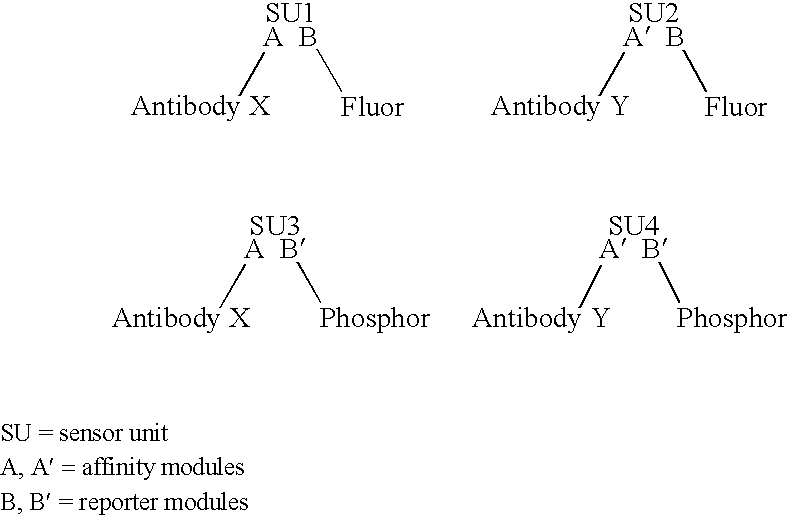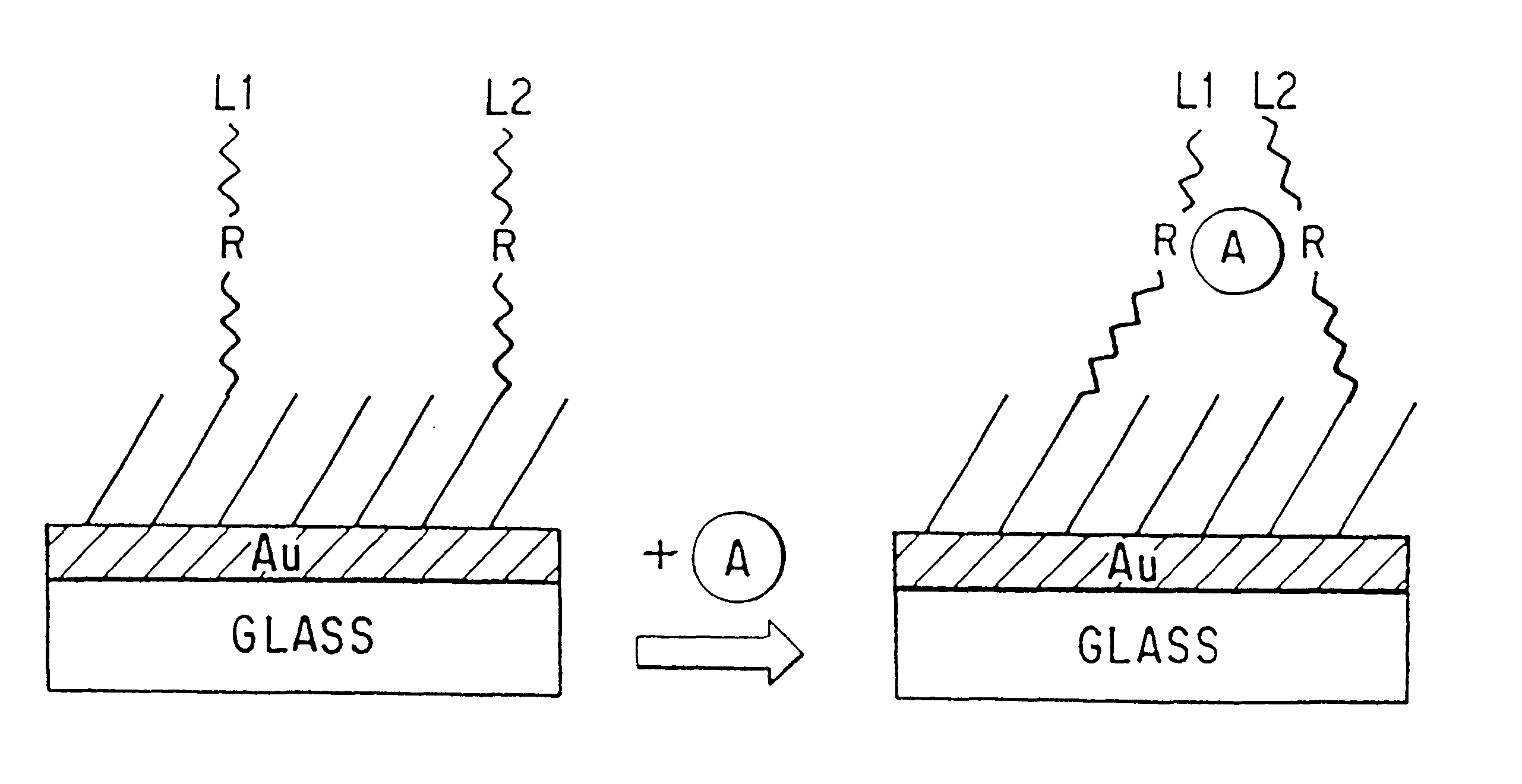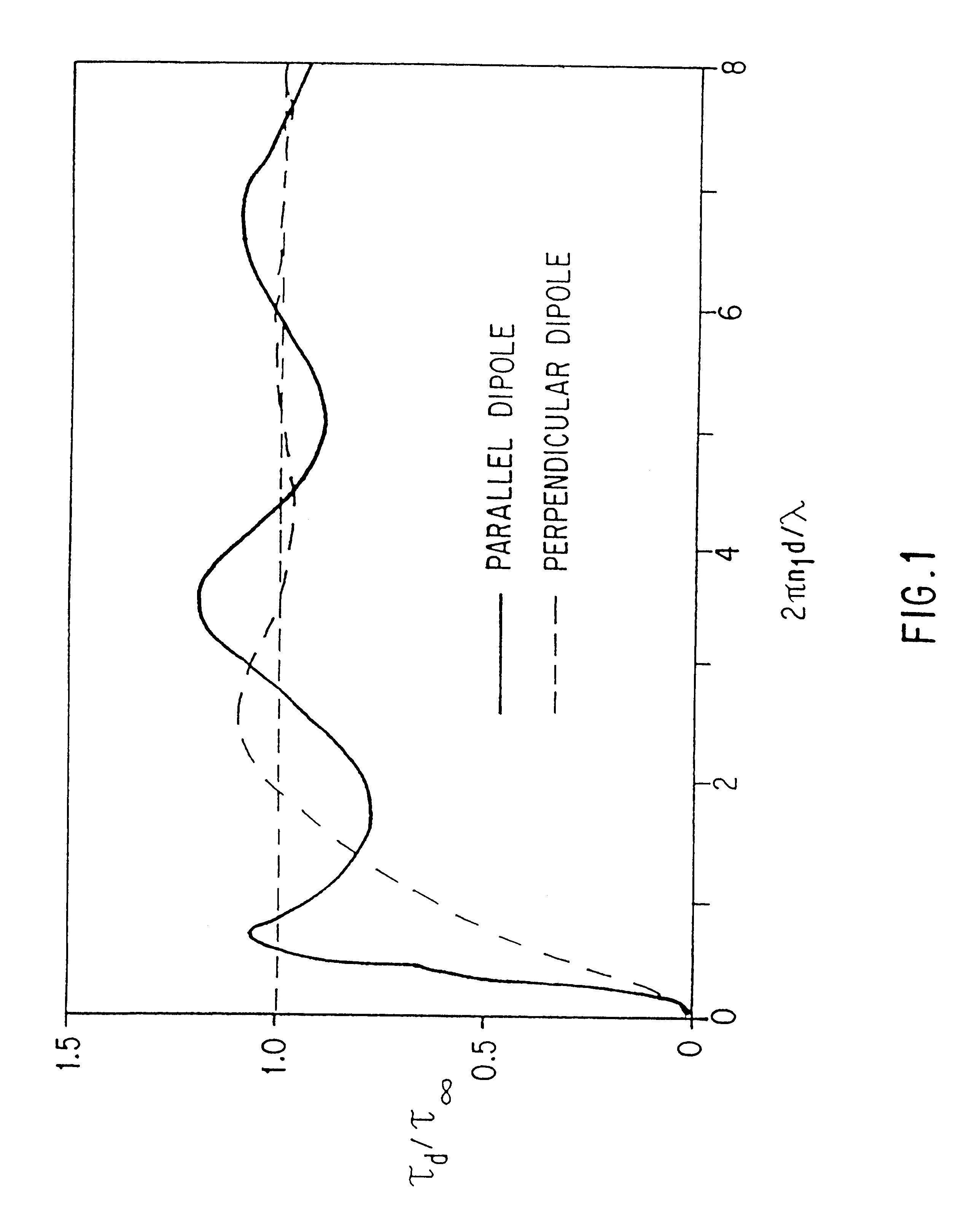Modular assembly for reagentless affinity separation and detection of analyte
a module assembly and affinity separation technology, applied in material analysis, positive displacement liquid engine, chemical/physical/physicochemical process, etc., can solve the problems of inability to achieve the objective, inconvenient to use, and inability to reverse the assay, so as to eliminate the biofouling of the affinity matrix
- Summary
- Abstract
- Description
- Claims
- Application Information
AI Technical Summary
Benefits of technology
Problems solved by technology
Method used
Image
Examples
example i
IA. Conformational Changes in the Receptor Near a Metallic or Other Influencing Substrate.
Various receptors, including some based on native biomolecules (Sohanpal, K.; Watsuji, T.; Zhou, L. Q.; Cass, A. E. G., "Reagentless Fluorescence Sensors Based Upon Specific Binding Proteins," Sensors & Actuators B 11: 547, 1993) and some based on synthetic molecules (Fabbrizzi, L.; Licchelli, M.; Pallavicini, P.; Sacchi, D.; Taglietti, A. "Sensing of Transition Metals Through Fluorescence Quenching or enhancement: A Review," Analyst 121: 1763, 1996), exhibit changes in the conformation of their molecular chains upon binding of an analyte. On co-localization of these receptors with luminophors, electrophors (electron-transfer sensitive probes), or other reporters, in a modular assembly in the vicinity of a metal or other film that influences the emission properties of the reporter, the resulting change in receptor conformation results in a change; e.g., in the average distance between a luminop...
example ii
Transduction Through Mediation of Transport of Quenchers.
Reagentless transduction can also be based on the use of quenchers capable of quenching excited states of a luminophor in the sample or sensing medium (e.g., O.sub.2 in air or dissolved in water). In these assemblies, binding of the analyte to a receptor results in a change in the modular assembly which inhibits the transport of a molecular quencher (e.g., O.sub.2) to the luminophor. Transport (e.g., diffusion) inhibition can be affected by, inter alia:
an occlusion of the surface of the assembly by the analyte (e.g., a protein);
a decrease in the porosity of the assembly,
a change in the solid state diffusivity in the modular assembly.
example iii
Transduction in Modular Assemblies by Excimer Formation and Disruption, Resonance Energy Transfer, and Photoinduced Electron Transfer.
Several reagentless transduction mechanisms based on the concept of modular design of responsive molecular assemblies are shown in FIG. 3.
PUM
| Property | Measurement | Unit |
|---|---|---|
| separation distance | aaaaa | aaaaa |
| affinity | aaaaa | aaaaa |
| binding affinity | aaaaa | aaaaa |
Abstract
Description
Claims
Application Information
 Login to View More
Login to View More - R&D
- Intellectual Property
- Life Sciences
- Materials
- Tech Scout
- Unparalleled Data Quality
- Higher Quality Content
- 60% Fewer Hallucinations
Browse by: Latest US Patents, China's latest patents, Technical Efficacy Thesaurus, Application Domain, Technology Topic, Popular Technical Reports.
© 2025 PatSnap. All rights reserved.Legal|Privacy policy|Modern Slavery Act Transparency Statement|Sitemap|About US| Contact US: help@patsnap.com



